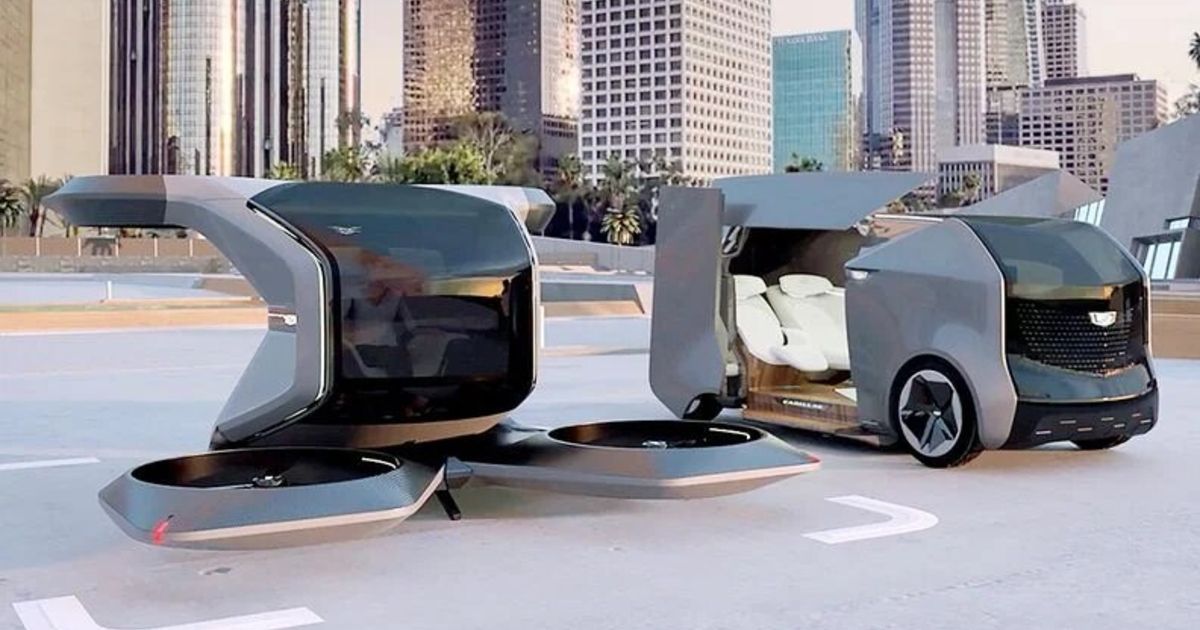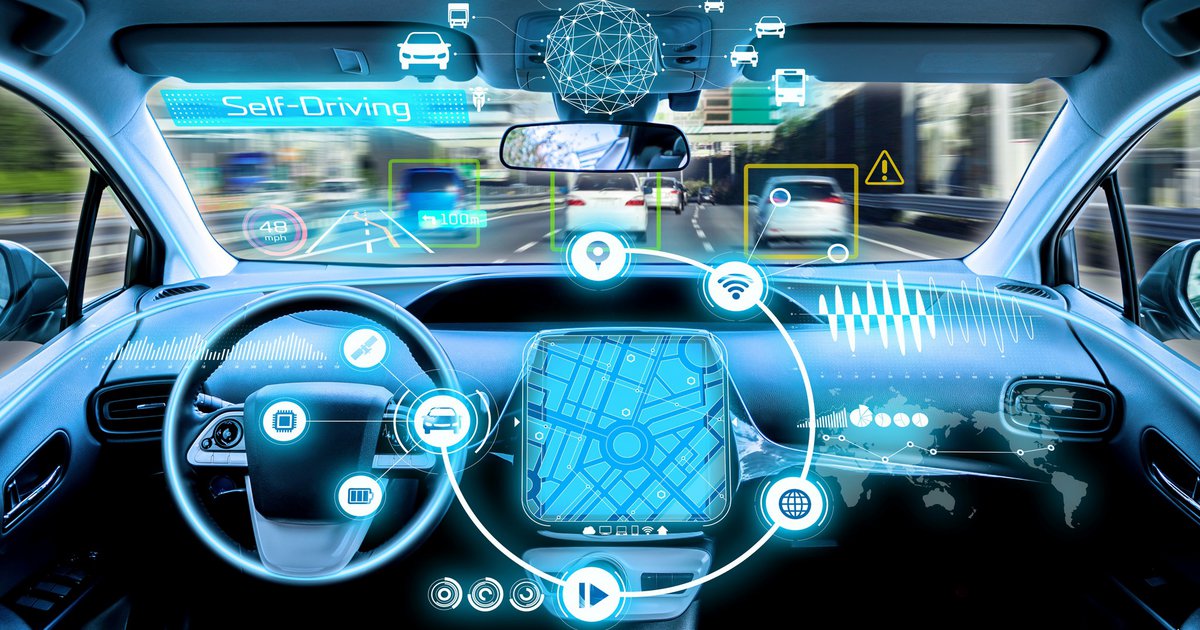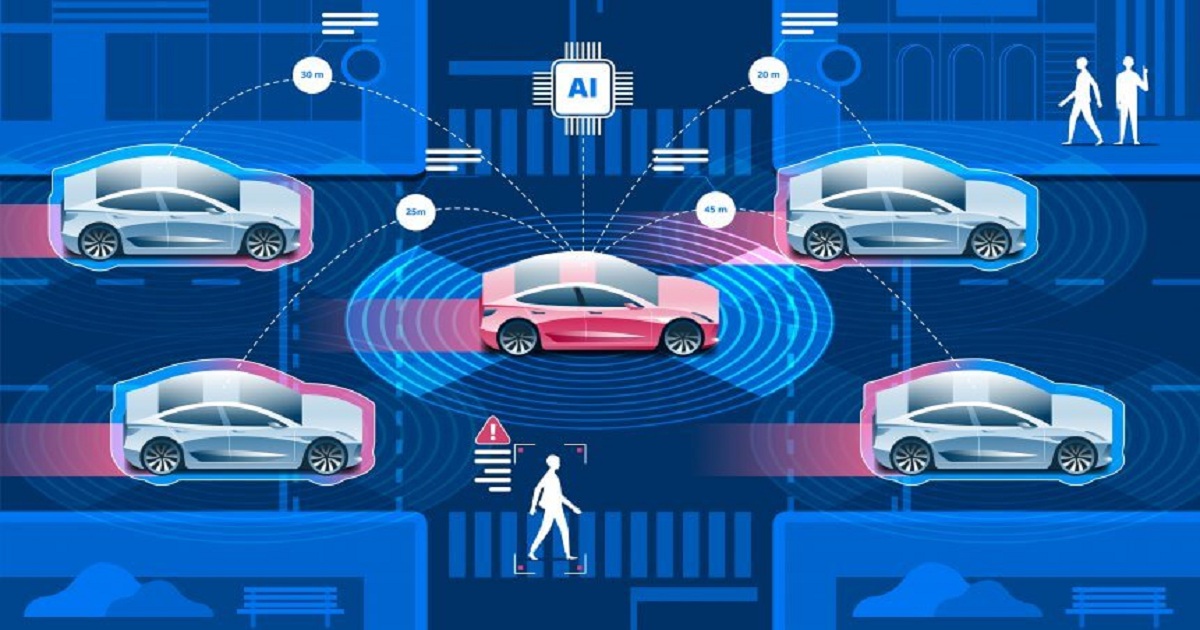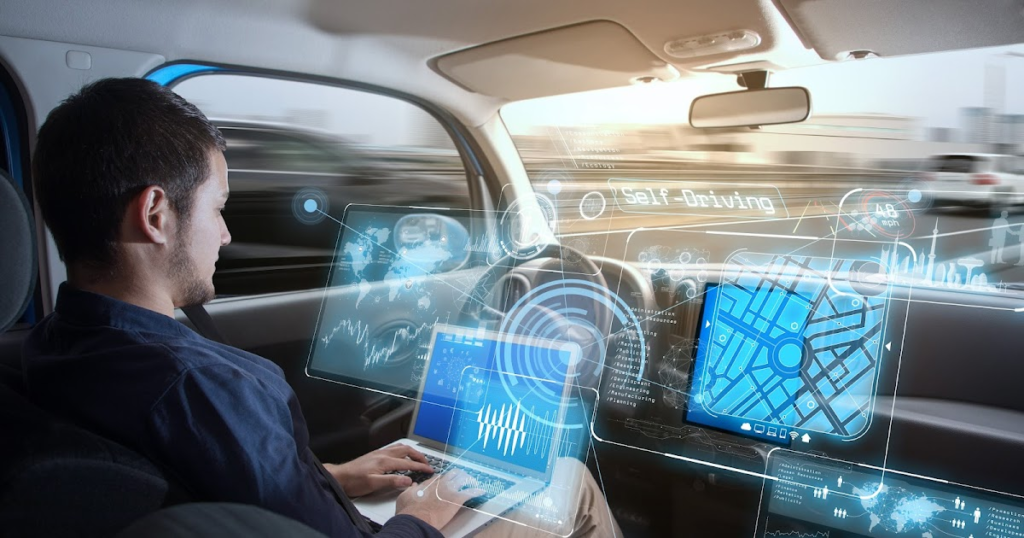The Autonomous Vehicle Revolution
The Current State of Autonomous Vehicles
We find ourselves in an era where autonomous vehicles have moved beyond the realm of science fiction and into our daily lives. These self-driving wonders are no longer just prototypes confined to test tracks; they are navigating our streets, highways, and even rural areas. Companies like Tesla, Waymo, and GM’s Cruise have been at the forefront of bringing autonomous technology to the masses.
The current state of autonomous vehicles is marked by a diverse range of offerings. From Tesla’s Autopilot system, which provides advanced driver-assistance capabilities, to fully autonomous test vehicles like Waymo’s, the landscape is vibrant and evolving. These vehicles utilize a combination of sensors, cameras, and artificial intelligence to make real-time decisions on the road. Lidar sensors, radar, and high-resolution cameras create a 360-degree view of the vehicle’s surroundings, providing the crucial data required for safe navigation.
The Promise of Autonomous Vehicles

Beyond the convenience of hands-free driving, the promise of autonomous vehicles extends into numerous realms, each poised to redefine how we think about transportation. One of the most compelling aspects is safety. Autonomous vehicles have the potential to drastically reduce accidents. With human error accounting for the majority of traffic incidents, the precision and unyielding attention of AI-driven vehicles could save countless lives.
Imagine a world with significantly reduced traffic congestion. Autonomous vehicles communicate with each other and traffic infrastructure, allowing for smoother traffic flow, fewer delays, and less time spent idling on crowded highways. This not only means less stress for commuters but also a positive environmental impact through reduced emissions.
Accessibility is another frontier that autonomous vehicles are poised to conquer. For individuals with mobility challenges, the elderly, and those who cannot drive due to physical disabilities, self-driving cars promise newfound freedom. These vehicles can be equipped with features that cater to individual needs, enabling a level of mobility that was previously unimaginable.
While we are still in the early stages of realizing the full potential of autonomous vehicles, the promise of this technology goes far beyond just cars. It’s a transformative force that will touch every aspect of our lives, from the way we commute to the way we design our cities and interact with our environment. The journey into this autonomous future is as exciting as it is transformative, and we’re just beginning to scratch the surface of its potential.
Smart Mobility: Shaping the Future
Connectivity and 5G
The revolution in autonomous vehicles is intrinsically tied to the advancement of connectivity, and at the heart of this transformation is 5G technology. 5G, or the fifth generation of wireless technology, is not just about faster data transfer rates; it’s about creating a robust, low-latency network that can handle the demands of autonomous driving.
The role of 5G in enabling autonomous vehicles cannot be overstated. It’s the nervous system that facilitates seamless communication between vehicles, infrastructure, and the digital world. With ultra-low latency and lightning-fast data transfer, 5G allows vehicles to make split-second decisions based on real-time information.
V2X Communication: Vehicle-to-Everything
Central to the 5G-powered ecosystem of autonomous vehicles is Vehicle-to-Everything (V2X) communication. V2X takes vehicle-to-vehicle (V2V) and vehicle-to-infrastructure (V2I) communication to the next level by including everything from pedestrians to traffic lights and even animals. This expansive network of communication is the bedrock for safe and efficient autonomous driving.
Imagine a scenario where your car receives real-time data from traffic lights, indicating when they will turn red or green. It can communicate with other cars to form a digital “net” around intersections, preventing collisions and optimizing traffic flow. V2X communication is not just a technological achievement; it’s a fundamental shift in the way we think about transportation.
The Key Players
Automotive Giants: Traditional Automakers
In the midst of this transformation, traditional automakers are not sitting idly. Companies like Ford, Toyota, and BMW are reinventing themselves to remain relevant in the age of autonomous vehicles. They are investing heavily in research and development, forming partnerships with tech companies, and even acquiring startups to ensure they have a seat at the table.
These automakers are leveraging their decades of experience in vehicle manufacturing to bring high-quality, reliable autonomous vehicles to the market. They understand that the transition to autonomous driving is a marathon, not a sprint, and they’re committed to delivering vehicles that meet the highest safety and performance standards.
Tech Titans and Startups
While traditional automakers are making waves, they face stiff competition from tech giants and startups. Companies like Google’s Waymo and Apple are taking a fresh approach to autonomous technology. Waymo, for example, has focused on building fully autonomous vehicles from the ground up and is already operating a commercial ride-hailing service with self-driving cars.
Startups, on the other hand, bring innovation and agility to the industry. They are exploring new business models and technologies that could disrupt the traditional automotive landscape. Whether it’s developing advanced sensors or creating unique mobility solutions, startups are key players in shaping the future of autonomous vehicles.
The collision of these traditional and disruptive forces is creating an environment where innovation is not limited to any single group. Instead, it’s a dynamic interplay between automotive giants, tech titans, and startups that is driving the autonomous vehicle revolution forward.
Autonomous Fleets and Ride-Sharing

Autonomous Taxis: The Uber of the Future
Picture this: you open a ride-sharing app on your phone, request a ride, and within minutes, an autonomous vehicle arrives at your doorstep. There’s no driver inside; it’s just you and the vehicle. This vision of the future is rapidly becoming a reality.
Companies like Uber and Lyft, which have disrupted the traditional taxi industry, are investing heavily in autonomous technology. They aim to reduce operating costs and make ride-sharing services more affordable for consumers. An autonomous taxi service, when fully realized, could operate 24/7, provide consistent and reliable service, and offer rides at a fraction of the cost of traditional taxis or even car ownership.
Benefits and Challenges
The benefits of autonomous ride-sharing services are numerous. They promise increased convenience, reduced traffic congestion, and a significant reduction in the number of vehicles on the road. This, in turn, can alleviate parking woes and reduce the environmental footprint of transportation.
However, challenges exist. Ensuring the safety of passengers in autonomous vehicles is paramount. Addressing concerns about liability in the event of an accident is complex. Navigating the complex web of regulations and standards is another hurdle. These challenges are actively being addressed, with a focus on creating a safe and secure environment for autonomous ride-sharing.
The Future of Public Transportation
Autonomous Buses and Trains
Public transportation is also experiencing a revolution, thanks to autonomy. Autonomous buses and trains have the potential to create more efficient and reliable transit systems. They can reduce congestion, improve schedules, and make public transportation a more attractive option for commuters.
Imagine buses that can adjust their routes and schedules in real time to avoid traffic jams. Or trains that coordinate seamlessly to provide a synchronized and efficient transportation network. Autonomous public transportation is poised to transform urban mobility and make city living even more convenient.
Redefining Urban Commuting
The impact of autonomous vehicles is not limited to the vehicles themselves. It’s changing the way we think about urban planning and infrastructure. City planners are reimagining road design to accommodate self-driving cars. Dedicated lanes for autonomous vehicles and smart intersections are becoming a reality. These innovations promise to reduce accidents, improve traffic flow, and create a more efficient urban commute.
In conclusion, the autonomous vehicle revolution is not confined to the cars we drive. It extends to connectivity, key industry players, the transformation of public transportation, sustainability, safety, regulations, cybersecurity, and the profound social and economic changes it brings. As we continue exploring the future of autonomous vehicles and smart mobility, we find ourselves on the precipice of a new era in transportation, one that is both exciting and transformative.
Urban Planning and Infrastructure
Smart Cities and Mobility
The integration of autonomous vehicles with smart cities is a significant trend. Smart cities leverage technology to enhance urban living, and autonomous vehicles play a pivotal role in achieving these goals. Expect to see cities equipped with sensors, AI traffic management systems, and efficient public transportation networks. These systems can communicate with autonomous vehicles to optimize traffic flow and reduce congestion.
The impact extends to energy efficiency, waste management, and sustainability. Smart cities can monitor and reduce energy consumption, streamline waste collection, and minimize environmental impact. The integration of autonomous vehicles and smart cities holds the promise of more environmentally friendly and efficient urban environments.
Reimagining Road Design
The rise of autonomous vehicles is prompting a reevaluation of road design. Cities are reimagining roadways to accommodate self-driving cars, prioritize safety, and improve traffic flow. Features like dedicated lanes for autonomous vehicles, smart intersections that facilitate communication between cars and infrastructure, and the creation of pedestrian-friendly spaces are all part of the plan.
These changes in road design not only enhance safety and convenience but also have the potential to transform urban living. With the reduction of accidents and improved traffic flow, cities can become more pleasant and efficient places to live and work.
Autonomous Vehicles and Sustainability
Reducing Emissions
Environmental sustainability is a pressing concern, and autonomous vehicles have a role to play in addressing it. These vehicles can reduce emissions through optimized driving patterns, reduced idling, and more efficient transportation systems. In a world where environmental concerns are paramount, this reduction in emissions is not just a nice-to-have feature; it’s a critical component of a greener future.
Electric and Autonomous: A Perfect Match
One of the key trends in autonomous vehicles is their synergy with electric propulsion. Electric autonomous vehicles are not only energy-efficient but also reduce the environmental impact of transportation. This combination offers a greener and more sustainable future, where our vehicles produce fewer emissions and rely on cleaner energy sources.
As electric vehicle technology continues to advance, we can expect to see an increasing number of electric autonomous vehicles on the road, further contributing to the reduction of greenhouse gas emissions and the overall sustainability of transportation.
Safety First: Autonomous Vehicle Technology
Sensors and LiDAR Technology
The safety of autonomous vehicles hinges on their ability to perceive and respond to their environment. Sensors and LiDAR (Light Detection and Ranging) technology are the eyes and ears of self-driving cars. These sensors create a 360-degree view of the vehicle’s surroundings and enable it to make decisions in real-time. LiDAR, in particular, is crucial for mapping the environment and detecting objects, pedestrians, and other vehicles.
Machine Learning and AI in Safety
Machine learning and artificial intelligence play an essential role in the safety of autonomous vehicles. These technologies allow vehicles to learn from their experiences and adapt to a wide range of driving conditions. Machine learning algorithms process vast amounts of data to identify patterns, make predictions, and improve the decision-making capabilities of autonomous vehicles.
The integration of machine learning and AI ensures that autonomous vehicles continuously improve their performance and safety, making them increasingly reliable and trustworthy for passengers and other road users.
Regulatory Hurdles and Progress
National and International Regulations
The development and deployment of autonomous vehicles are subject to a complex web of regulations. These regulations vary by country and even within regions, making it a challenging landscape for manufacturers and operators. Achieving a unified regulatory framework is crucial for the widespread adoption of autonomous technology.
Regulations encompass aspects like safety standards, testing protocols, and liability considerations. Ensuring that autonomous vehicles comply with these regulations is essential for their successful integration into transportation systems around the world.
Progress in Legislation
Governments are continually adapting and revising legislation to accommodate the emergence of autonomous vehicles. New laws are being drafted to address issues related to liability, insurance, and safety standards. These legislative changes are essential for creating a safe and structured environment for the operation of autonomous vehicles.
The journey of autonomous vehicles is not just a technological one; it’s also a legal and regulatory one. The interaction between technological innovation and legal adaptation is vital for the seamless integration of autonomous vehicles into society.
Cybersecurity Concerns

Protecting Autonomous Vehicles
As autonomous vehicles become more interconnected and reliant on digital systems, they are also more susceptible to cyberattacks. Ensuring the cybersecurity of these vehicles is crucial to prevent hacking and maintain the safety of passengers. Cybersecurity measures include encryption, intrusion detection systems, and secure over-the-air updates to protect vehicles from external threats.
Vulnerabilities and Solutions
Identifying vulnerabilities in autonomous vehicle systems and developing robust security measures are top priorities. Ethical hackers and cybersecurity experts are continuously testing these vehicles’ vulnerabilities to strengthen their defenses. The development of secure, tamper-proof systems is essential to protect the vehicles and the sensitive data they handle.
The future of autonomous vehicles hinges on creating a secure environment where passengers can trust that their vehicles are immune to hacking and external threats.
User Experience and Human-Machine Interaction
The Passenger Experience
In the world of autonomous vehicles, passengers become travelers. The experience inside the vehicle changes significantly. With the absence of a human driver, the interior of the vehicle can be transformed into a mobile workspace, entertainment hub, or relaxation space.
Passengers can use their travel time more productively or enjoy leisure activities. Infotainment systems, in-vehicle Wi-Fi, and comfortable seating are all part of enhancing the passenger experience. This shift in focus from driving to the passenger is set to redefine the concept of travel.
Transitioning to Fully Autonomous Vehicles
As we transition from partially autonomous to fully autonomous vehicles, there’s a critical need to educate passengers and ensure their comfort. Understanding the capabilities and limitations of autonomous technology is essential. Passengers need to trust that the vehicle can handle a wide range of driving conditions and scenarios, from smooth highway cruising to navigating complex urban environments.
Additionally, establishing effective communication between passengers and the vehicle is vital. Clear communication systems that provide updates on the vehicle’s actions, destinations, and safety measures are crucial to building trust and ensuring a positive user experience.
Economic and Social Impact
Job Displacement and Creation
The adoption of autonomous vehicles will undoubtedly lead to changes in the job market. While autonomous technology can displace certain roles, it also creates new opportunities. The development, manufacturing, and maintenance of autonomous vehicles require skilled workers. Moreover, the emergence of autonomous ride-sharing services can create jobs for vehicle operators, remote monitoring, and maintenance personnel.
The key lies in preparing the workforce for these shifts by providing training and upskilling opportunities, ensuring that individuals can transition into the new roles created by the autonomous vehicle industry.
The Future of Car Ownership
The widespread adoption of autonomous vehicles may fundamentally alter the concept of car ownership. With the availability of autonomous ride-sharing services, the need for personal vehicles may decrease. People could opt for on-demand transportation, reducing the number of vehicles on the road.
This change can have significant implications for the automotive industry and the broader economy. Automakers and related industries will need to adapt to the evolving landscape of transportation, exploring new business models and revenue streams.
Challenges and Ethical Dilemmas
Ethical Decision-Making in Autonomous Vehicles
One of the thorniest challenges in the development of autonomous vehicles is determining how they should respond in ethical dilemmas. For instance, if an accident is imminent, how should the vehicle prioritize the safety of its passengers versus pedestrians or other drivers? These moral decisions are complex and raise important questions about how vehicles should be programmed to respond.
Addressing these dilemmas involves creating a framework for ethical decision-making in autonomous vehicles, which can be a combination of legal, societal, and industry guidelines. Striking the right balance between passenger safety and broader ethical considerations is a nuanced challenge.
Liability and Accident Scenarios
In the event of an accident involving an autonomous vehicle, the issue of liability becomes complex. Determining responsibility between the vehicle manufacturer, the software provider, and the owner or passenger requires a clear legal framework.
The resolution of liability scenarios is crucial for establishing trust in autonomous vehicles. Passengers need to know that they are protected and that accidents, while rare, are handled fairly and with a focus on safety and justice.
Testing and Real-World Challenges

The Importance of Simulated Testing
Autonomous vehicles undergo extensive testing to ensure their safety and reliability. Simulation is a critical aspect of this testing. It allows vehicles to experience a wide range of scenarios, from harsh weather conditions to complex urban environments, in a controlled and repeatable manner. Simulation accelerates the development process and helps manufacturers fine-tune their vehicles’ performance.
Adapting to Unpredictable Real-World Scenarios
While simulated testing is invaluable, it can’t replicate every real-world scenario. Autonomous vehicles must adapt to unpredictable events like extreme weather, sudden road closures, or unique driving behaviors. The ability to handle these unscripted scenarios is a key challenge in the development of self-driving cars.
International Perspectives on Autonomous Vehicles
Global Leaders in Autonomous Technology
Different countries are taking varying approaches to autonomous technology. Countries like the United States and China are leading in research and development, while others are focusing on regulation.
Cultural and Regional Differences
Cultural norms and regional regulations impact how autonomous vehicles are accepted and integrated. Understanding these differences is crucial for global adoption.
Autonomous Vehicles in Specialized Applications
Autonomous Trucks and Freight Transport
The logistics and shipping industries are poised for disruption with the introduction of autonomous trucks. These vehicles promise to increase efficiency, reduce costs, and enhance supply chain management.
Autonomous Vehicles for People with Disabilities
Autonomous technology has the potential to provide greater mobility for individuals with disabilities. Self-driving vehicles can empower those who may have difficulty using traditional transportation.
Consumer Adoption and Trust

Building Consumer Trust
For autonomous vehicles to gain widespread acceptance, consumers must trust the technology. Transparency, safety records, and education are essential in building this trust.
Consumer Adoption Rates
As autonomous technology matures and safety records improve, more consumers are likely to adopt autonomous vehicles as their preferred mode of transportation.
The Road Ahead: Predictions and Speculations
The Near Future of Autonomous Vehicles
In the near future, we can expect to see more autonomous taxis, buses, and delivery vehicles on our streets. These vehicles will continue to undergo improvements in safety and efficiency.
Long-Term Predictions and Speculations
The long-term impact of autonomous vehicles is a subject of speculation. Some foresee a dramatic reduction in accidents and more efficient transportation systems, while others predict challenges related to job displacement and ethical dilemmas.
In conclusion, the intersection of autonomous vehicles and smart mobility is reshaping how we move and live. As technology advances and societal attitudes change, we are on the brink of a transportation revolution. The ongoing evolution of transportation is an exciting journey, with the promise of safer, more efficient, and more sustainable mobility on the horizon.
The Ongoing Evolution of Transportation
The journey into the world of autonomous vehicles and smart mobility is just beginning, and the road ahead is filled with promise, challenges, and transformative possibilities.
As autonomous vehicles become more integrated into our lives, we can look forward to a transportation system that is safer and more efficient. Accidents caused by human error will become increasingly rare, and the time we spend in traffic will be minimized. With the potential for 24/7 ride-sharing services, the number of vehicles on the road may decrease, leading to less congestion and pollution.
In addition to the convenience and efficiency of autonomous transportation, we must recognize the profound social and economic changes it brings. New jobs will be created in the development, manufacturing, and maintenance of autonomous vehicles. At the same time, job displacement may occur in certain industries, necessitating a focus on education and retraining to help individuals transition into the evolving job market.
Moreover, the shift from personal car ownership to autonomous ride-sharing services has the potential to change the automotive industry as we know it. Automakers are exploring new business models, and traditional car ownership may become a less common practice.
However, the path to fully autonomous vehicles is not without its challenges and ethical dilemmas. The technology must overcome regulatory hurdles, address cybersecurity concerns, and ensure that the decision-making algorithms in autonomous vehicles navigate complex moral dilemmas with safety and ethics in mind.
Testing and real-world challenges are also critical. While simulated testing is invaluable, it can’t replicate every real-world scenario. Autonomous vehicles must be prepared to handle unpredictable events, from sudden weather changes to erratic human drivers.
From an international perspective, various countries are taking different approaches to autonomous technology. Understanding cultural and regional differences is vital for the global adoption of autonomous vehicles.
Furthermore, we are witnessing the emergence of autonomous vehicles in specialized applications. Autonomous trucks and freight transport have the potential to revolutionize logistics and supply chain management. Additionally, self-driving cars offer greater mobility for individuals with disabilities, providing newfound freedom and independence.
As we look to the future, building consumer trust is essential. Transparency in technology, clear safety records, and educational efforts are crucial for fostering acceptance and adoption of autonomous vehicles.
In the near future, we can expect to see an increase in autonomous taxis, buses, and delivery vehicles on our streets. These vehicles will continue to undergo improvements in safety and efficiency.
Looking further ahead, the long-term impact of autonomous vehicles remains a subject of speculation. While some predict a dramatic reduction in accidents and more efficient transportation systems, others foresee challenges related to job displacement and ethical dilemmas.
In conclusion, the ongoing evolution of transportation is a thrilling journey, filled with incredible potential. Autonomous vehicles and smart mobility solutions are transforming the way we connect, commute, and consider transportation. As technology advances and societal attitudes change, we are on the brink of a transportation revolution. The intersection of autonomous vehicles and smart mobility is not just reshaping how we move but also the way we live and envision the future of transportation.
Frequently Asked Questions (FAQ) – Autonomous Vehicles and Smart Mobility
What are autonomous vehicles?
Autonomous vehicles, often referred to as self-driving cars, are vehicles equipped with advanced sensors, cameras, and artificial intelligence systems that allow them to navigate and make driving decisions without human intervention. They can operate without a human driver or with minimal human input.
How do autonomous vehicles work?
Autonomous vehicles use a combination of sensors, cameras, lidar technology, and artificial intelligence to perceive their environment. These systems create a real-time map of their surroundings, allowing the vehicle to make driving decisions based on the collected data.
What is smart mobility?
Smart mobility refers to the integration of technology and data into transportation systems to make them more efficient, convenient, and sustainable. It includes features like real-time traffic management, ride-sharing services, and interconnected vehicles.
What role does 5G technology play in autonomous vehicles?
5G technology provides the high-speed, low-latency connectivity necessary for autonomous vehicles to communicate with each other and with infrastructure. It enables real-time data transfer, enhancing the safety and efficiency of self-driving cars.
Are autonomous vehicles safe?
The safety of autonomous vehicles is a top priority for developers. They are equipped with advanced safety features and undergo extensive testing, including simulations and real-world scenarios, to ensure their safety. While accidents involving autonomous vehicles have occurred, they are generally rare and often the result of human errors in testing or unusual circumstances.
How will autonomous vehicles affect job markets?
The adoption of autonomous vehicles may lead to changes in the job market. While certain roles may be displaced, new job opportunities in vehicle development, maintenance, and remote monitoring are expected to emerge. Preparing the workforce for these shifts is essential.
What ethical dilemmas do autonomous vehicles face?
Autonomous vehicles must be programmed to make ethical decisions in challenging scenarios, such as who to prioritize in an accident. These dilemmas raise complex questions about the moral framework for self-driving cars and how they should respond in critical situations.
What impact will autonomous vehicles have on the environment?
Autonomous vehicles have the potential to reduce emissions and increase energy efficiency. Through optimized driving patterns and reduced idling, they can contribute to a greener and more sustainable future, especially when combined with electric propulsion.
Are autonomous vehicles available to the public for personal use?
While autonomous technology is advancing, fully autonomous vehicles for personal use are not widely available. The technology is currently used in ridesharing services, delivery vehicles, and select public transportation systems. Personal autonomous vehicles are expected to become more accessible in the future.
What is the timeline for the widespread adoption of autonomous vehicles?
The timeline for the widespread adoption of autonomous vehicles is still uncertain and may vary by region. The development of regulation, safety standards, and consumer trust are significant factors influencing the pace of adoption. However, we can expect to see a gradual increase in autonomous vehicles on the roads in the coming years.
In our previous article on technology’s transformative potential, we explored the groundbreaking applications of blockchain technology. From supply chain management to healthcare, the possibilities are vast. If you’re interested in how innovation extends beyond cryptocurrencies, check out our blog post on Blockchain Beyond Cryptocurrencies: Revolutionary Applications. It’s a fascinating journey into the world of blockchain and its impact on various industries.
For a deeper dive into the future of transportation, including autonomous vehicles and smart mobility solutions, we recommend reading the comprehensive article by Asharib Ali on Medium. This article provides valuable insights into the trends, challenges, and exciting prospects in the world of transportation technology. Explore “The Future of Transportation: Autonomous Vehicles and Smart Mobility Solutions” here to stay updated on the latest developments in this dynamic field.





